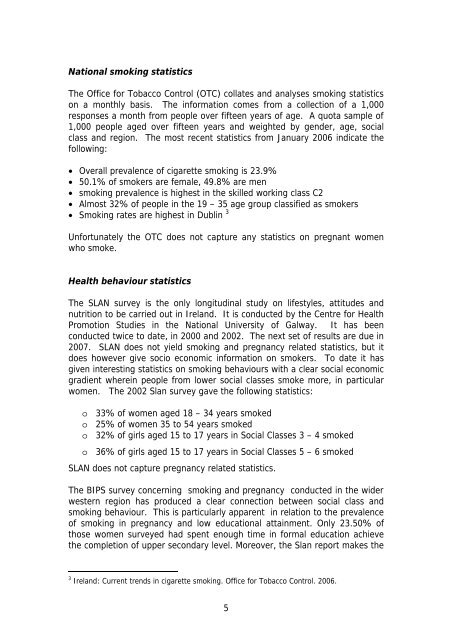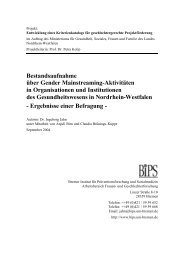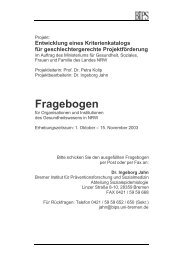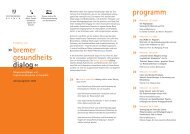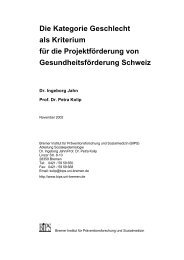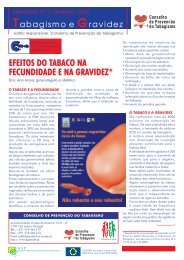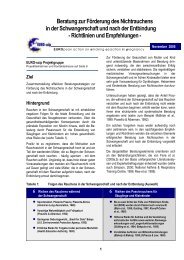Create successful ePaper yourself
Turn your PDF publications into a flip-book with our unique Google optimized e-Paper software.
National smoking statistics<br />
The Office for Tobacco Control (OTC) collates and analyses smoking statistics<br />
on a monthly basis. The information comes from a collection of a 1,000<br />
responses a month from people over fifteen years of age. A quota sample of<br />
1,000 people aged over fifteen years and weighted by gender, age, social<br />
class and region. The most recent statistics from January 2006 indicate the<br />
following:<br />
• Overall prevalence of cigarette smoking is 23.9%<br />
• 50.1% of smokers are female, 49.8% are men<br />
• smoking prevalence is highest in the skilled working class C2<br />
• Almost 32% of people in the 19 – 35 age group classified as smokers<br />
• Smoking rates are highest in Dublin 3<br />
Unfortunately the OTC does not capture any statistics on pregnant women<br />
who smoke.<br />
Health behaviour statistics<br />
The SLAN survey is the only longitudinal study on lifestyles, attitudes and<br />
nutrition to be carried out in Ireland. It is conducted by the Centre for Health<br />
Promotion Studies in the National University of Galway. It has been<br />
conducted twice to date, in 2000 and 2002. The next set of results are due in<br />
2007. SLAN does not yield smoking and pregnancy related statistics, but it<br />
does however give socio economic information on smokers. To date it has<br />
given interesting statistics on smoking behaviours with a clear social economic<br />
gradient wherein people from lower social classes smoke more, in particular<br />
women. The 2002 Slan survey gave the following statistics:<br />
o 33% of women aged 18 – 34 years smoked<br />
o 25% of women 35 to 54 years smoked<br />
o 32% of girls aged 15 to 17 years in Social Classes 3 – 4 smoked<br />
o 36% of girls aged 15 to 17 years in Social Classes 5 – 6 smoked<br />
SLAN does not capture pregnancy related statistics.<br />
The <strong>BIPS</strong> survey concerning smoking and pregnancy conducted in the wider<br />
western region has produced a clear connection between social class and<br />
smoking behaviour. This is particularly apparent in relation to the prevalence<br />
of smoking in pregnancy and low educational attainment. Only 23.50% of<br />
those women surveyed had spent enough time in formal education achieve<br />
the completion of upper secondary level. Moreover, the Slan report makes the<br />
3 Ireland: Current trends in cigarette smoking. Office for Tobacco Control. 2006.<br />
5


